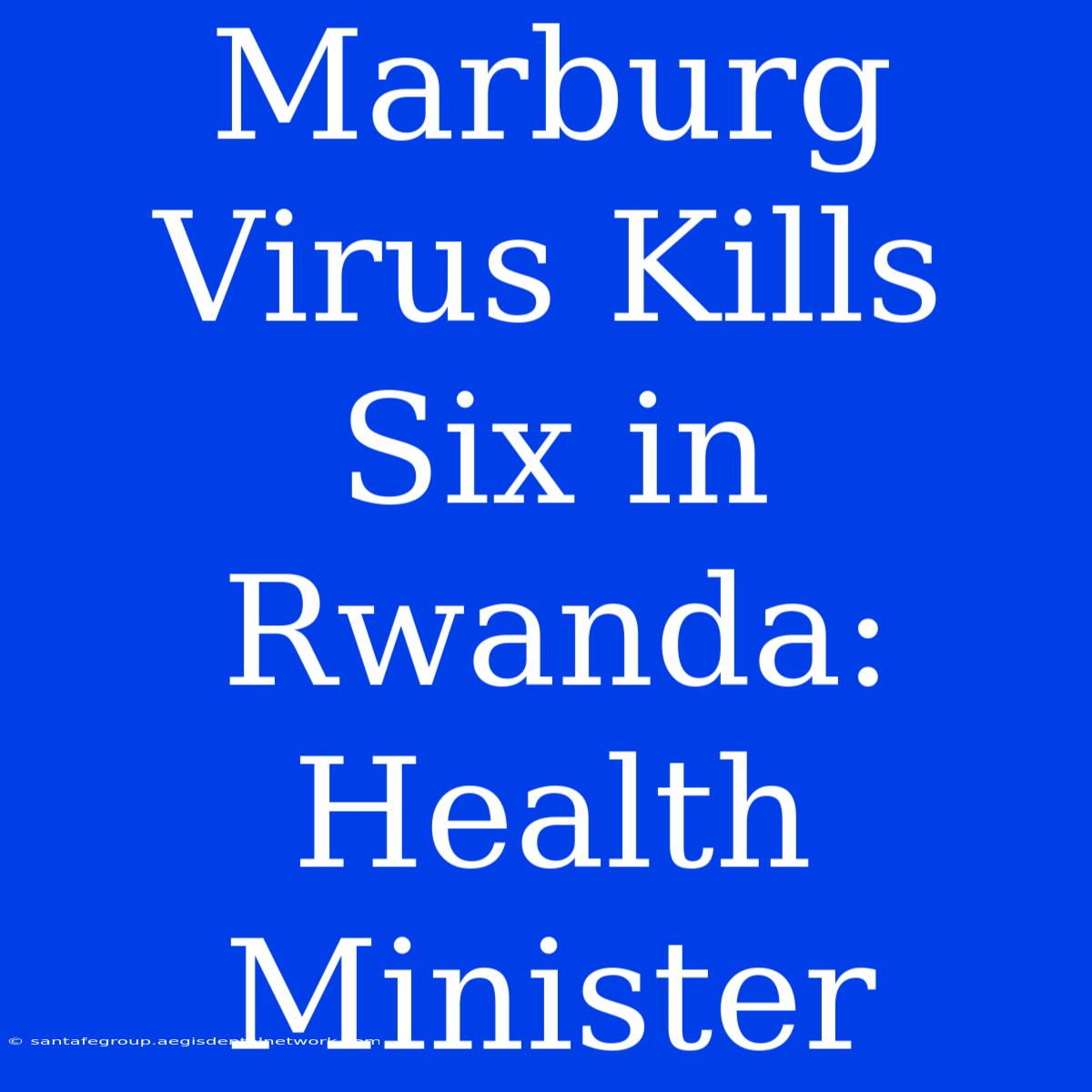Marburg Virus Kills Six in Rwanda: A Deep Dive into the Deadly Outbreak
Is the Marburg virus a growing threat? The recent outbreak in Rwanda, claiming six lives, has raised serious concerns about this deadly disease. Marburg virus disease (MVD), a highly infectious and often fatal illness, has emerged as a major public health concern, prompting a swift and decisive response from the Rwandan government.
Editor Note: This article provides a comprehensive look at the Marburg virus outbreak in Rwanda, analyzing the situation, potential impacts, and necessary precautions.
This situation underlines the importance of understanding the virus's nature, transmission, and the crucial steps for effective control. This analysis explores the Marburg virus's characteristics, transmission pathways, and the current response to the outbreak in Rwanda.
Analysis: This guide delves into the latest information on the Marburg virus outbreak in Rwanda, analyzing key aspects like the virus's origin, transmission methods, and the government's response. Our analysis aims to provide a clear and informative understanding of the situation, aiding readers in understanding the potential impact and necessary precautions.
Key Aspects of the Marburg Virus in Rwanda:
| Aspect | Description |
|---|---|
| Origin | Originating from bats, the Marburg virus is a zoonotic disease, meaning it can be transmitted from animals to humans. |
| Transmission | Humans contract the virus through direct contact with infected bats or their bodily fluids. |
| Symptoms | Symptoms, including fever, headache, fatigue, and muscle aches, can manifest within two to twenty-one days after exposure. |
| Treatment | No specific treatment exists for Marburg virus disease. |
| Prevention | Prevention measures include avoiding contact with infected animals, practicing good hygiene, and seeking immediate medical attention. |
Marburg Virus Disease in Rwanda
Introduction: The recent outbreak in Rwanda, with six confirmed fatalities, highlights the severe consequences of this disease. This section examines the situation in Rwanda, focusing on the initial identification, the government's response, and potential implications for the region.
Key Aspects:
- Outbreak Confirmation: The World Health Organization (WHO) confirmed the outbreak in Rwanda, marking the first time the virus has been detected in the country.
- Swift Response: The Rwandan Ministry of Health has activated an emergency response plan, involving surveillance, contact tracing, and isolation measures.
- Potential Impact: The outbreak raises concerns about potential regional spread, necessitating enhanced vigilance and proactive measures across neighboring countries.
Transmission Pathways and Risks
Introduction: Understanding how the Marburg virus spreads is crucial for preventing further transmission. This section analyzes the various transmission pathways, highlighting the risks associated with each.
Facets:
- Direct Contact: Transmission occurs primarily through direct contact with infected individuals, bodily fluids, or contaminated materials.
- Animal-to-Human: The virus can be transmitted from infected bats to humans, primarily through direct contact with their saliva or feces.
- Human-to-Human: The disease can spread between humans through direct contact with the blood, body fluids, or organs of infected people.
Preventive Measures and Response
Introduction: This section delves into the preventive measures and response strategies being implemented to control the outbreak and safeguard public health.
Further Analysis:
- Isolation and Quarantine: Individuals suspected of infection are immediately isolated and quarantined, limiting the virus's spread.
- Contact Tracing: Extensive contact tracing is employed to identify and monitor individuals who may have been in contact with infected persons.
- Infection Control: Rigorous infection control practices are enforced in healthcare settings to minimize the risk of nosocomial transmission.
Conclusion: The Marburg virus outbreak in Rwanda underscores the importance of effective surveillance, prompt intervention, and collaborative efforts to prevent further outbreaks. Implementing robust public health measures, including vigilant contact tracing, isolation procedures, and public awareness campaigns, is critical for mitigating the spread of this deadly virus.
FAQ
Introduction: This section addresses frequently asked questions regarding the Marburg virus and the ongoing outbreak in Rwanda.
Questions:
-
Q: What are the symptoms of Marburg virus disease?
- A: Symptoms typically include fever, headache, muscle aches, fatigue, and bloody diarrhea.
-
Q: How long does it take for symptoms to appear?
- A: The incubation period for MVD can range from two to twenty-one days after exposure.
-
Q: Is there a cure for Marburg virus disease?
- A: There is no specific treatment for Marburg virus disease. However, supportive care can improve the chances of survival.
-
Q: How can the spread of the virus be prevented?
- A: Prevention involves avoiding contact with infected animals, practicing good hygiene, and seeking immediate medical attention if symptoms appear.
-
Q: How effective are vaccines against the Marburg virus?
- A: There is no approved vaccine for the Marburg virus. However, researchers are actively developing potential vaccines and treatments.
-
Q: What is the fatality rate of Marburg virus disease?
- A: The fatality rate can vary significantly, but it can be as high as 88%.
Summary: The recent Marburg virus outbreak in Rwanda serves as a stark reminder of the threat posed by this deadly virus. The swift response from the Rwandan government and international organizations highlights the importance of preparedness and collaboration in effectively containing emerging infectious diseases.
Closing Message: As the situation evolves, it is crucial to rely on credible sources for updates and adhere to the latest public health guidelines. By understanding the virus, its transmission, and prevention measures, we can contribute to safeguarding public health and mitigating the impact of potential outbreaks.

